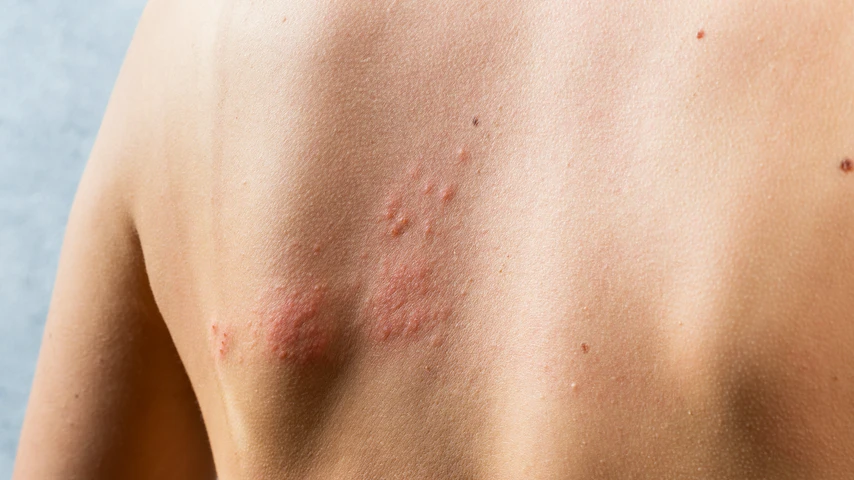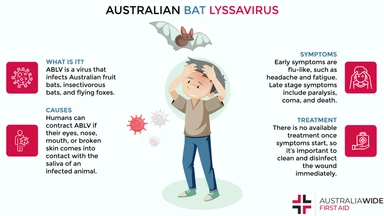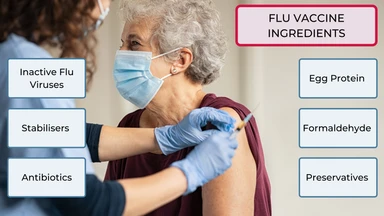Virus Fact Sheet: Shingles


Shingles is a contagious, painful skin rash that develops from the varicella-zoster virus (VZV). It is also called herpes zoster, or chickenpox.
When you get chickenpox, your body makes antibodies against the varicella-zoster virus to fight it off. The problem is that the virus becomes dormant after you've had chickenpox; it remains in your body for life.
If you go through a stressful period of your life (for example, a divorce, loss of a loved one or job), then your immune system may not be able to keep up with fighting off viruses and bacteria as well as before. This allows the dormant varicella-zoster virus to reactivate itself and cause shingles on one side of the body or face only (unlike chickenpox).
However, there are some serious risks associated with shingles that can make it more dangerous than chickenpox. If you think you may have shingles, or know someone who does, keep reading for all of the information you need on how this viral infection works and how to treat and prevent it.

The tell-tale sign of shingles is a painful, blistering rash that typically emerges as a strip along the left or right side of the torso. The rash can also appear on one side of the neck or face, though some people may not develop the rash at all.
The symptoms of shingles typically come on gradually. They can start as early as three days before the rash appears and continue for several weeks after it appears.
The pain of shingles can be very uncomfortable, especially when you try to move or touch affected areas of your skin. You may also experience itching, tingling and numbness as well as:
The varicella zoster virus can spread from one person to another. It usually spreads from person to person by direct contact with the rash or fluid from the rash of a contagious person. Rarely, it may be spread when someone breathes in airborne droplets that have been coughed or sneezed into the air by a contagious person.
The varicella zoster virus can spread from a person who has shingles to a baby who is not yet vaccinated against chickenpox. This can happen if the baby’s caregiver does not know that they have shingles or has been recently exposed to someone with shingles.
Anyone who has had chickenpox is at risk for developing shingles later in life, but the risk increases with age. Shingles occurs most often in adults between the ages of 50 and 70 years old.
A new study found that COVID-19 increases the risk of shingles in people over 50 even more. According to research, people diagnosed with COVID-19 had a 15% higher risk of getting shingles, while people hospitalised due to COVID-19 had a 21% higher risk of getting shingles.
If you have a family member who's had shingles, you're more likely to get it yourself as well. And if your kids catch chickenpox from you, they're also at risk for developing shingles later on in their lives.
Shingles usually occurs when your immune system is weakened by stress or illness (like the flu), so if you've been stressed out lately, this may be why you suddenly got sick with the rash!
If you have an autoimmune disorder like lupus or rheumatoid arthritis that affects your immune system’s ability to fight off viruses and bacteria properly, then it's possible that your body won't be able to fight off chickenpox as well when exposed to it. It could lead not only to an outbreak of zoster sores but potentially other complications such as pneumonia or encephalitis (swelling around the brain).
It’s important to know the symptoms of shingles because it can lead to serious complications if it’s not treated right away.
The complications of shingles can include but aren’t limited to:
PHN is the most common complication of shingles. It is ongoing pain in areas of the skin where shingles developed. It is a result of nerve fibre damage, and can sometimes take years to resolve.
Shingles can spread to other areas in your body, including the eyes. Shingles of the eye, which is more formally called ophthalmic herpes zoster, can cause the cornea and retina to swell and potentially result in scarring and permanent vision loss.
If you have a weakened immune system due to HIV/AIDS, cancer treatments, or certain medications, you are at an increased risk of developing shingles in other parts of the body, not just the skin. For instance, shingles can infect the lungs and cause pneumonia. It has also been known to enter the liver and cause hepatitis.
In some rare cases, shingles can spread into the brain and cause meningitis or encephalitis. Meningitis refers to an inflammation of the fluid and membranes surrounding the brain and spinal cord. Encephalitis, meanwhile, refers to an inflammation of the brain's active tissues.
We run certified First Aid courses throughout all major Australia citys. Find a location near you.

There is no cure for shingles. However, doctors tend to prescribe antiviral drugs to speed up the healing process and lower the risk of complications. These medications are most effective if they're started within 3 days after the rash appears, and commonly include:
You might also need antibiotics for secondary infection, moisturising ointment for the rash and subsequent crusting, and, of course, plenty of bed rest.
You may have heard about the shingles vaccine which can reduce the severity of shingles and postherpetic neuralgia in older adults.
In Australia, the vaccine is recommended for people aged 60 and over and is free to people over the age of 70. It consists of a single injection and is generally safe.
If you don't want to get vaccinated, there are some things you can do to help reduce your risk of developing shingles, including:
If you have been exposed to someone with shingles or have a rash that looks like chickenpox, see your doctor right away.
If you are pregnant and have not had chickenpox or the chickenpox vaccine yet, talk to your doctor about getting vaccinated now.
And to learn more about identifying and managing different health emergencies, book a First Aid course with us today.

October 28, 2022
Shingles is a viral infection that can occur in anyone who has had chickenpox. It's most distinct symptom is a painful, blistering rash that occurs on one side of the body. Without prompt treatment, shingles can have life-threatening complications.

August 4, 2022
The Australian Bat Lyssavirus (ABLV) forms part of the same family as the rabies virus. ABLV infects all four species of fruit bats and flying foxes in Australia. In humans, ABLV can cause respiratory difficulties, coma and, in most cases, death.

June 10, 2022
Flu viruses can change their surface structure from one year to the next. As such, new flu vaccines are developed each year. Flu vaccines comprise numerous ingredients that aid their development, purity, and efficacy.